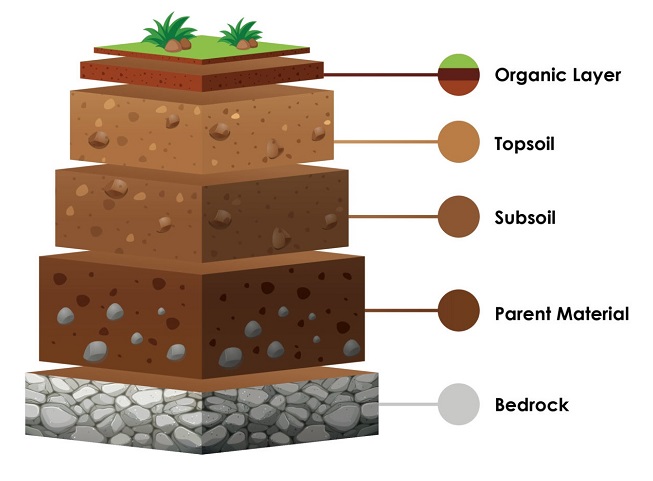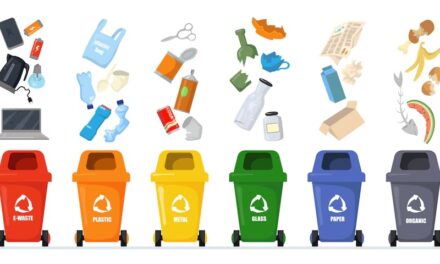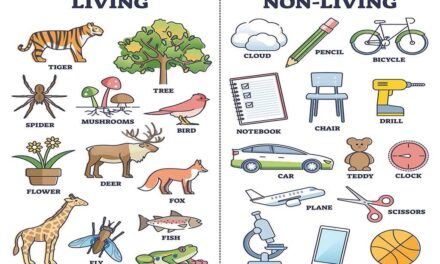Soil might seem like just dirt, but it’s actually a complex and important part of our environment. In this chapter, we’ll learn all about how soil is formed, its different components, and why it’s so important. We’ll also explore the different layers of soil and understand its role in supporting life. Let’s dig in!
Formation of Soil
Soil forms over a long period of time through a process called soil formation. This process involves the breakdown of rocks and the addition of organic materials. Here’s how it works:
Weathering
– Physical Weathering: Rocks are broken down into smaller pieces by physical forces such as wind, water, and temperature changes. For example, water freezing in cracks in rocks can cause them to break apart.
– Chemical Weathering: Chemical reactions break down rocks into smaller particles. For example, rainwater can react with minerals in the rocks, causing them to dissolve.
Organic Matter
– Decaying Plants and Animals: When plants and animals die, they decompose and add organic matter to the soil. This organic matter becomes part of the soil and helps it become richer and more fertile.
Soil Formation Process
- Rock Breakdown: Rocks are weathered into small particles.
- Organic Matter Accumulation: Dead plants and animals decompose and mix with the rock particles.
- Soil Development: Over time, the mixture of rock particles and organic matter forms soil.
Composition of Soil
Soil is made up of several different components, each with its own unique properties. Understanding these components helps us know what makes soil good for growing plants and supporting life.
Gravel
– Description: Gravel consists of small, loose stones and rocks. It is the coarsest type of soil particle.
– Characteristics: Gravel drains water quickly and doesn’t hold nutrients well. It’s often found in riverbeds and construction sites.
Sand
– Description: Sand is made up of tiny, gritty particles. It is smaller than gravel but larger than silt and clay.
– Characteristics: Sandy soil drains water quickly and warms up fast in the sun. However, it does not hold nutrients very well, so plants may need additional fertilizers.
Clay
– Description: Clay consists of very tiny particles that are smaller than sand and silt. It feels smooth and sticky when wet.
– Characteristics: Clay soil holds water and nutrients well but can become hard and compacted, making it difficult for roots to grow.
Humus
– Description: Humus is the dark, rich part of the soil that comes from decomposed plant and animal material.
– Characteristics: Humus improves soil structure, helps retain moisture and nutrients, and is essential for healthy plant growth.
Soil Profile
The soil profile is the different layers of soil that develop over time. Each layer has its own characteristics and functions.
Topsoil
– Description: Topsoil is the top layer of soil, which is rich in nutrients and organic matter.
– Characteristics: This layer is crucial for plant growth as it contains most of the soil’s nutrients and humus.
Subsoil
– Description: Subsoil is the layer below the topsoil. It contains fewer nutrients and less organic matter.
– Characteristics: The subsoil often has more minerals and is denser than the topsoil. It provides support for plants but isn’t as fertile as the topsoil.
Bedrock
– Description: Bedrock is the layer of solid rock beneath the soil.
– Characteristics: Bedrock is the source of the mineral particles in the soil. It’s not usually visible unless the soil is very thin or eroded.
Importance of Soil
Soil is essential for many aspects of life on Earth. Let’s explore why soil is so important:
Supporting Plant Growth
– Nutrients: Soil provides plants with essential nutrients, such as nitrogen, phosphorus, and potassium, which are necessary for growth.
– Water: Soil helps retain water, allowing plants to access moisture even during dry periods.
– Anchorage: Soil anchors plant roots, providing stability and support.
Supporting Animal Life
– Habitat: Many animals, such as earthworms, insects, and small mammals, live in the soil. These animals help break down organic matter and keep the soil healthy.
– Food Source: Soil supports plant growth, which provides food for herbivores and, in turn, for carnivores.
Purifying Water
– Filtration: Soil helps filter and clean water as it passes through. This process removes impurities and pollutants, making the water safer for plants, animals, and humans.
Carbon Storage
– Climate Regulation: Soil stores carbon dioxide, which helps regulate the Earth’s climate. Plants take in carbon dioxide from the air and transfer it to the soil, where it can be stored for long periods.
Building Materials
– Construction: Soil and clay are used in building materials such as bricks and tiles. Different types of soil are used depending on the construction needs.
The worksheet covers the following topics-
Formation of Soil
Composition of Soil
Gravel
Sand
Clay
Humus
Soil Profile
Top soil
Subsoil
Bedrock
Importance of soil

















